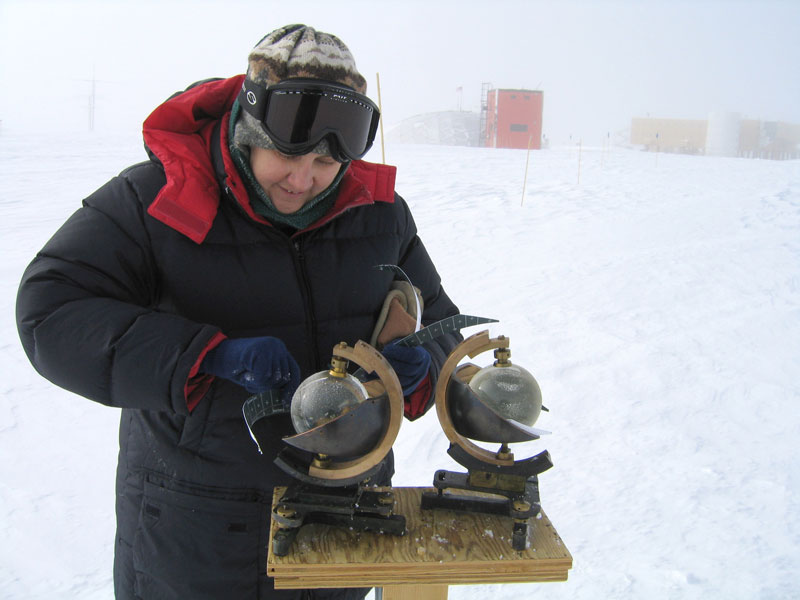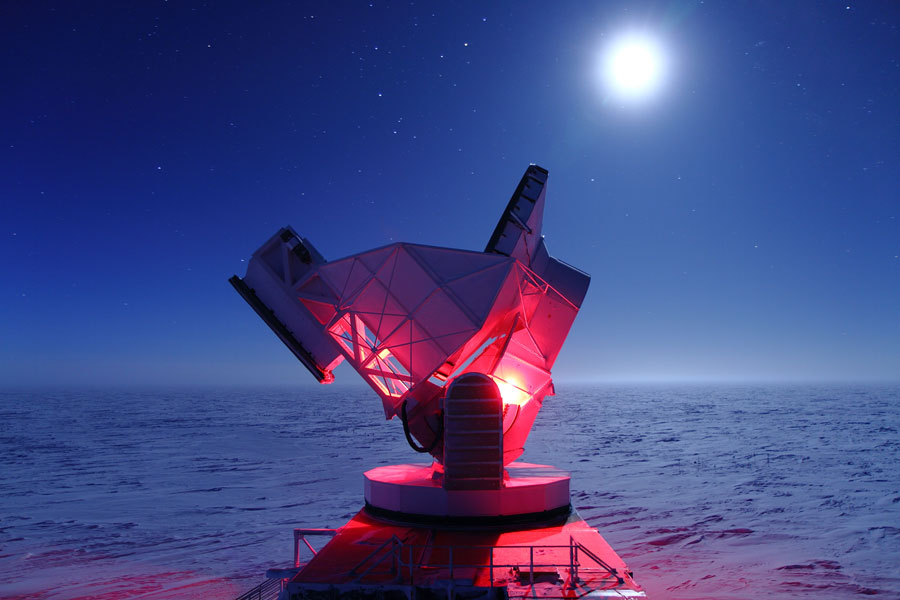The US National Science Foundation Astrophysics and Geospace Sciences Program supports studies of three major domains:
- Middle and upper atmosphere - mesosphere and thermosphere. Current research focuses on atmospheric temperature changes and dynamics of neutral winds at altitudes from 30 to a few hundred kilometers, particularly in the context of planetary atmospheric tides and climate change dynamics.
- Near-Earth solar wind, magnetosphere, and ionosphere. A geospace domain characterized by the interplay of ionized plasma from the solar wind and energetic charged particles with the Earth's magnetic field;
- Astronomy and astrophysical studies of the Universe, including cosmic ray and solar physics.
Most astronomical research projects at the South Pole operate within the ‘Dark Sector’, an area which is kept free of both light and Electromagnetic Interference (EMI) as far as possible. The atmosphere at the Pole has no significant pollution and is nearly completely devoid of water vapour, offering astronomers a very clear view of space. One valuable characteristic of the South Pole is the effect of its position on Earth's axis, creating an angle of view that does not change over time which allows for continuous monitoring of the same region of space.
The nearest artificial light source to the South Pole during winter is McMurdo Station, lying around 1355 km (~840 miles) distant. Planes can land at the Pole for only four months of the year and for the remainder the only artificial objects in the sky are satellites. The cold, dry, stable conditions make the Antarctic Plateau the ideal location for observations of sub-millimeter wavelengths (infrared to microwave) in the upper atmosphere, whilst the lack of light, stable atmosphere and low air pollution provide a perfect environment for optical astronomy.
One of the most high profile recent projects at the South Pole is the IceCube Neutrino Observatory, which was completed in December 2010. IceCube is a form of telescope buried ~1.6 km below the surface of the ice, containing over 5100 spherical sensors which point downwards towards deep polar ice. Deep ice in Antarctica is considered to be the purest in the world, and the IceCube detectors are placed at a depth at which there are no air bubbles in the ice, which would normally distort neutrino measurements.
Neutrinos are typically extremely difficult to detect. The IceCube sensors are designed to detect light emitted when high-energy neutrino particles collide with ice particles. Nowhere else on earth do the appropriate conditions exist to study neutrinos in this way. News about the project is regularly updated on the IceCube website.
The South Pole Telescope (SPT), 75 ft tall and completed in February 2007, can detect Cosmic Microwave Background (CMB) Radiation and a primary objective is to enhance our understanding of the expansion of the Universe from the time of the Big Bang by identifying galaxy clusters where CMB light has been altered by concentrations of dark matter. Scientists will also attempt to confirm the existence of Dark Energy and identify some of its properties using the SPT. As yet, little is known about Dark Energy except that it appears to push objects apart in a manner similar but opposite to that of a gravitational force. The University of Chicago webcast and blog provides more detailed information on the SPT.
The Martin A. Pomerantz Observatory (MAPO) houses equipment for several research projects, including the Advanced Telescope Project (ATP), Cosmic Background Radiation Anisotropy experiment (COBRA), the Antarctic muon and neutrino detector array project (AMANDA) and equipment for operating the nearby SPIREX and PYTHON telescopes. Originally built in 1993-94, it is located about one kilometer from the main South Pole station in the Dark Sector, and is named after astrophysicist Martin Pomerantz who has worked on research projects at the South Pole since 1964.
More information on the US Astrophysics and Geospace Sciences Program



